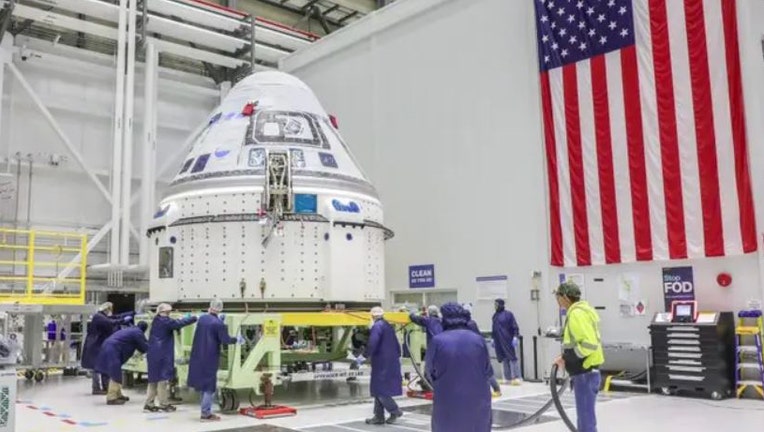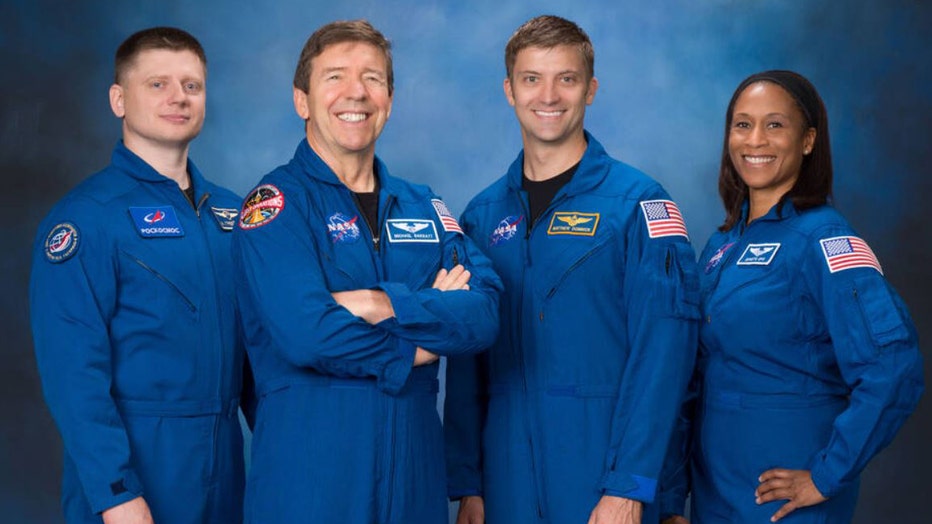Boeing Starliner spacecraft still requires months of work before NASA astronaut flight

The Boeing CST-100 Starliner spacecraft was moved into the Hazardous Processing Area at the company’s Commercial Crew and Cargo Processing Facility at NASA’s Kennedy Space Center in Florida on Feb. 8, 2023, in advance of power-up and fueling operatio
KENNEDY SPACE CENTER, Fla. - Boeing managers revealed the company has months of work remaining to get the CST-100 Starliner spacecraft ready for its first NASA astronaut flight to the International Space Station.
Boeing was set to launch its first round of astronauts from Cape Canaveral, Florida, to the space station this summer, however, weeks before the July launch date, mission managers revealed two new problems discovered with the spacecraft.
Engineers discovered new issues after further examining data from the CST-100 Starliner orbital test flight (OFT) from May 2022, a repeat test flight from a botched attempt in 2019 that ended without docking at the ISS because of a computer glitch.
In June, Boeing managers revealed two new issues going into the Crew Flight Test (CFT) with NASA astronauts Suni Williams and Butch Wilmore. On Monday, NASA and Boeing leaders said corrective measures are still in progress, and the CFT won't happen until next year.
The more significant issue was discovered with the parachutes used to slow the spacecraft for landing back on Earth. Small sections of the lines that run from Starliner to the parachutes, called soft links, were retested because Boeing engineers believed the data was recorded incorrectly, and the lines have a lower failure limit. The theory was confirmed through additional testing.
Boeing Starliner program manager Mark Nappi said fixes for the soft links are in testing, including options a Boeing engineer came up with in his garage.
"One of our engineers on the program builds chutes for personal use, and the day that we found out that the testing was suspect, he went home in his garage and built three prototypes to try and understand what we could do next and brought those back," Nappi said. "Right off the bat, you know, we had a really good head start on figuring out what we needed to do to redesign those."
Boeing will add additional stitching to the soft links, and after a drop test in November, the final chute design should be delivered around December.
Fixing the parachute concerns is essential before CFT can happen.
"The parachute delivery is the critical path," Nappi said.
The second concern involved flammable tape used extensively inside the spacecraft to wrap wire harnesses on Starliner.
To resolve the issue, the vehicle was divided into 12 zones, and engineers are removing tape or applying "remediation techniques" to areas where the tape cannot be removed.
According to NASA Commercial Crew Program Steve Stich, Boeing's teams have removed "pounds of tape" from the vehicle. The tape is used throughout the spacecraft to hold wiring in place.
"We have taken off more than we expected," Nappi said. "The tape comes off rather easily."
Stich said SpaceX also used the same tape on the Crew Dragon spacecraft but not in the same way, and it was easily removed once the issue was discovered.
By the end of September, the Starliner tape issue should be ready for review, according to Nappi.
NASA is taking steps to independently review the changes and corrections with Starliner before it approves a launch date.
Stich said an independent team will review all data and changes before the Crew Flight Test happens.
As part of a more comprehensive review of Starliner, NASA’s chief engineer spoke to all Boeing team managers involved with every system of the spacecraft.
Stich said the current corrective plan was run by the Aerospace Safety Advisory Panel, and the members were "pleased."
Both NASA and Boeing officials said it's too early to set a tentative launch date for Starliner.
"We’re going to be ready with the spacecraft in early March," Nappi said, adding that doesn't mean a March launch date.
The company will work with NASA and launch provider United Launch Alliance to find a new Crew Flight Test launch date in 2023.
Astronauts shuffle waiting on Boeing Starliner to be ready

SpaceX Crew-8 Official Crew Portrait with Matthew Dominick, Michael Barratt, Jeanette Epps, (ROS) Aleksandr Grebenkin (Photgrapher: Bill Stafford and Josh Valcarcel) (NASA)
After the space shuttle program ended, NASA paid Russia for nine years to launch astronauts to the International Space Station and bring them home.
Boeing and SpaceX were selected by NASA in 2014 to begin flying American astronauts to and from the ISS. SpaceX successfully launched the first American astronauts from Florida in 2020.
SpaceX is preparing its seventh astronaut mission to the ISS using the company's Crew Dragon spacecraft under the Commercial Crew Program.
While NASA’s astronaut program awaits a second transportation option for its astronauts, the space agency has shifted more crew to SpaceX’s Crew Dragon. Stich said the astronauts are conducting training to be ready to fly on either Starliner or Crew Dragon.
NASA astronaut Jeanette Epps was slated to fly on Starliner but was recently reassigned to the SpaceX Crew-8 mission.
NASA astronauts Josh Cassada and Nicole Mann also flew on the Crew-5 mission to the ISS on Crew Dragon after being initially assigned to Starliner.
NASA has contracted Boeing for six flights to the space station.
"There is no reason to change our plans," Nappi said when asked what the path forward will be for Starliner with the retirement of the International Space Station nearing.
NASA plans to retire the ISS in 2030. When the International Space Station program ends, private space stations will be the future of low-Earth orbit. Multiple private space stations are under development by private companies.

